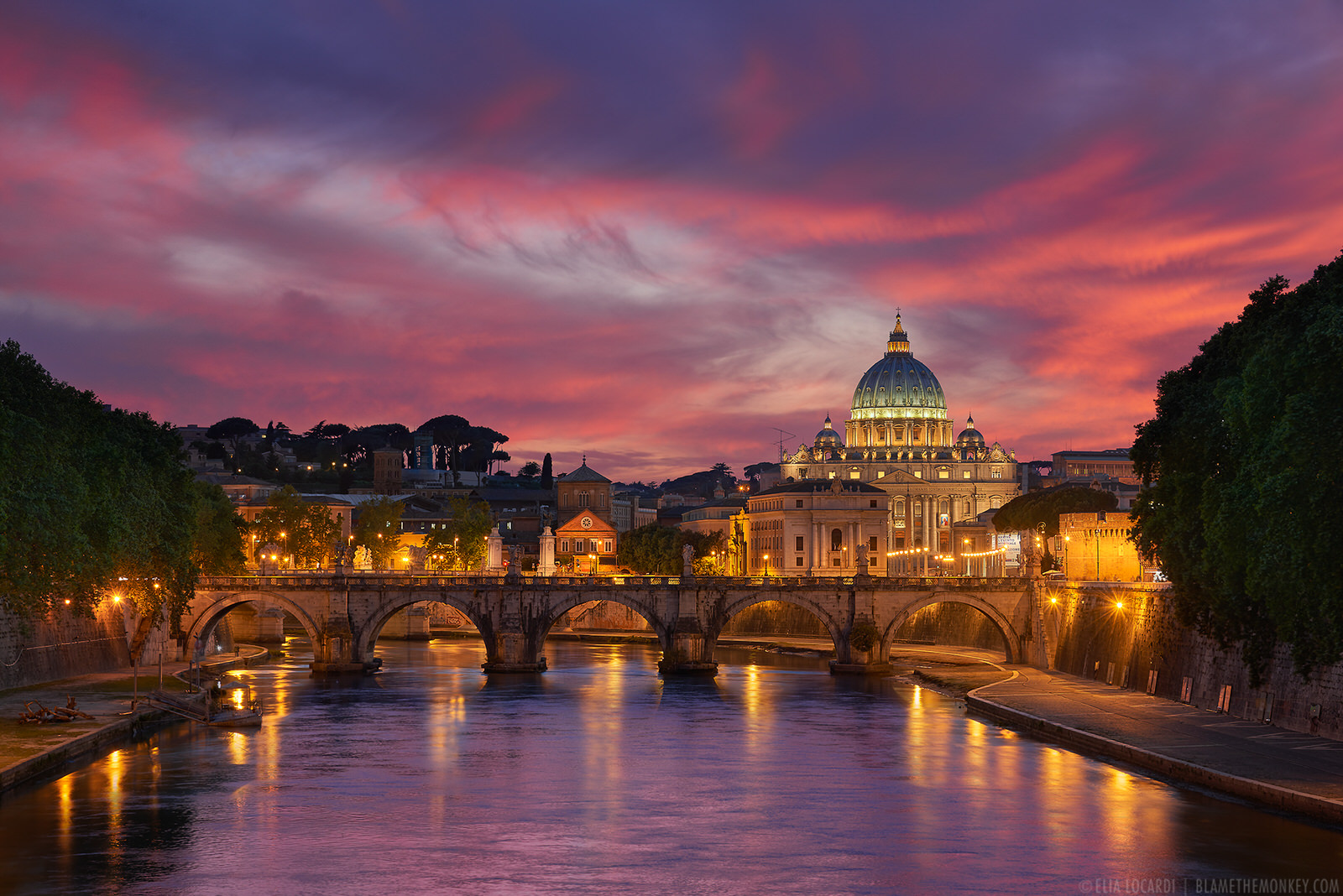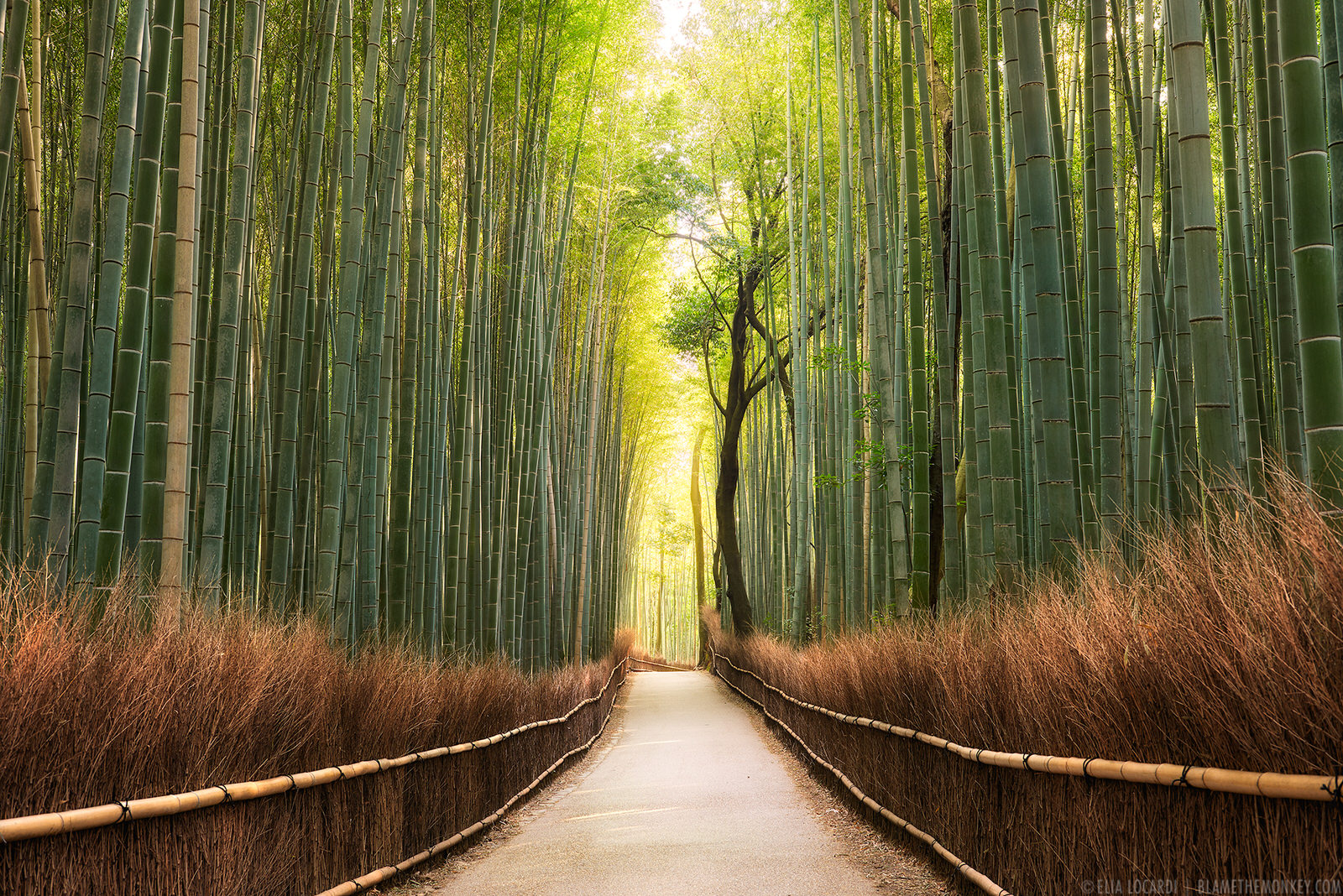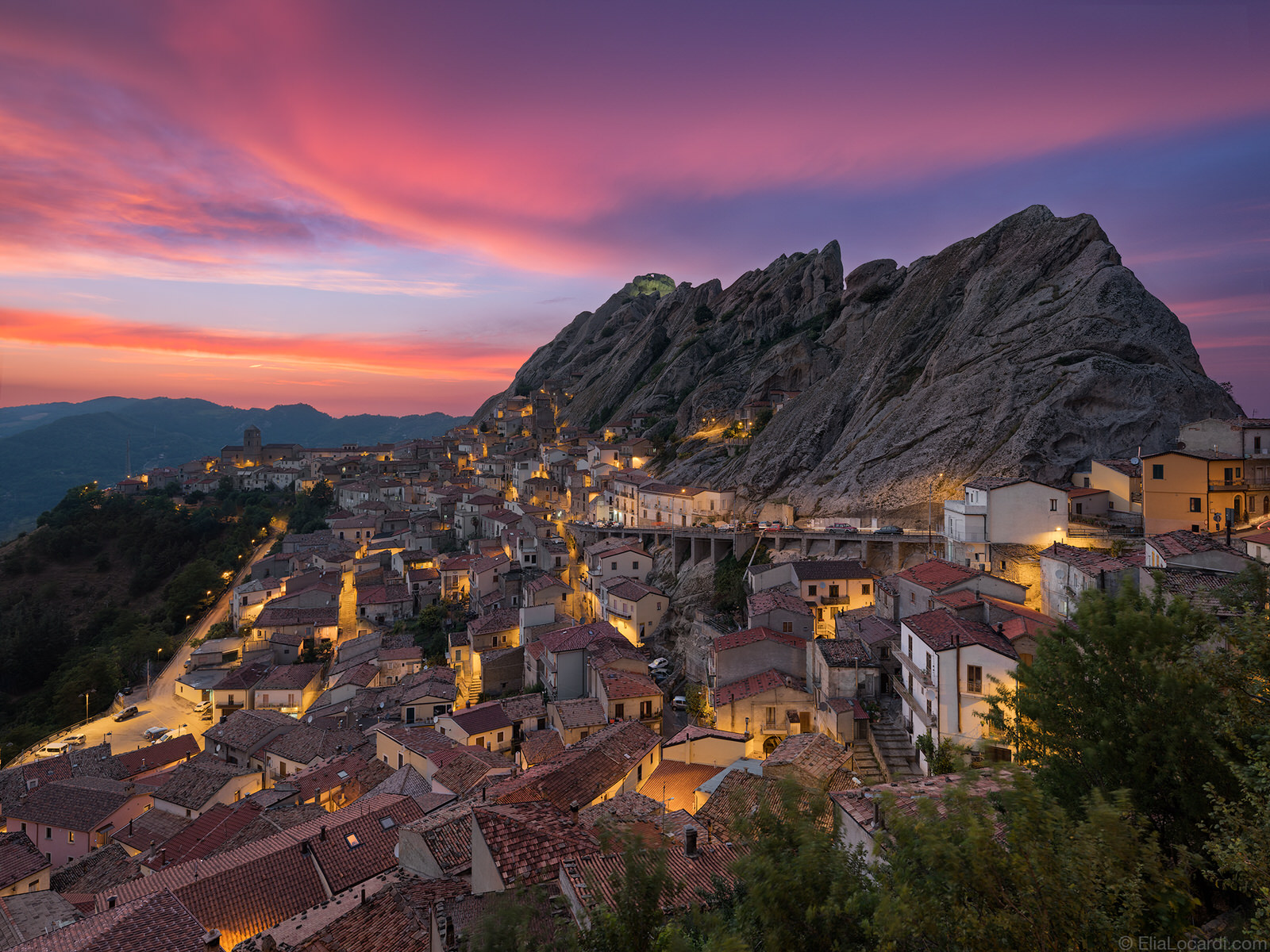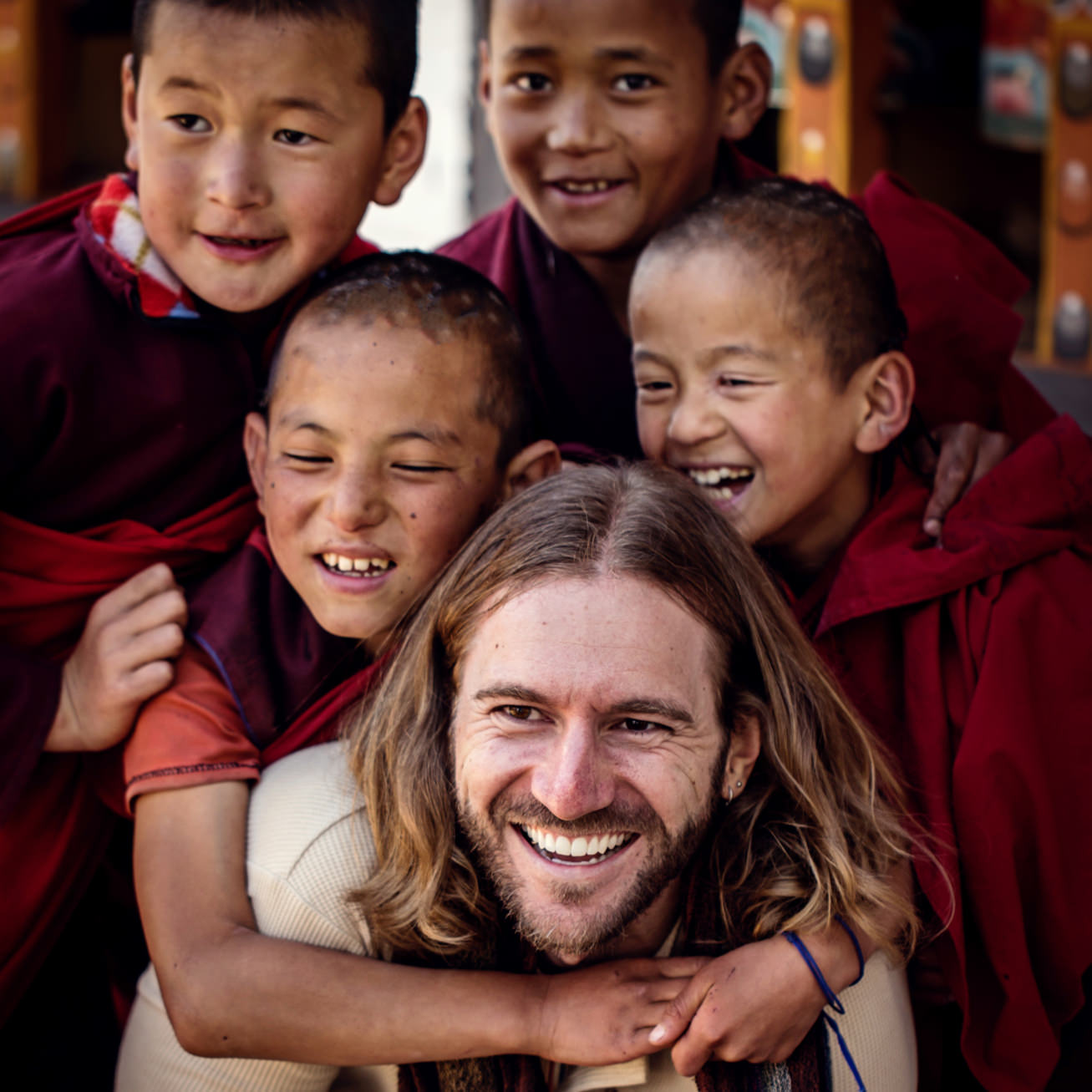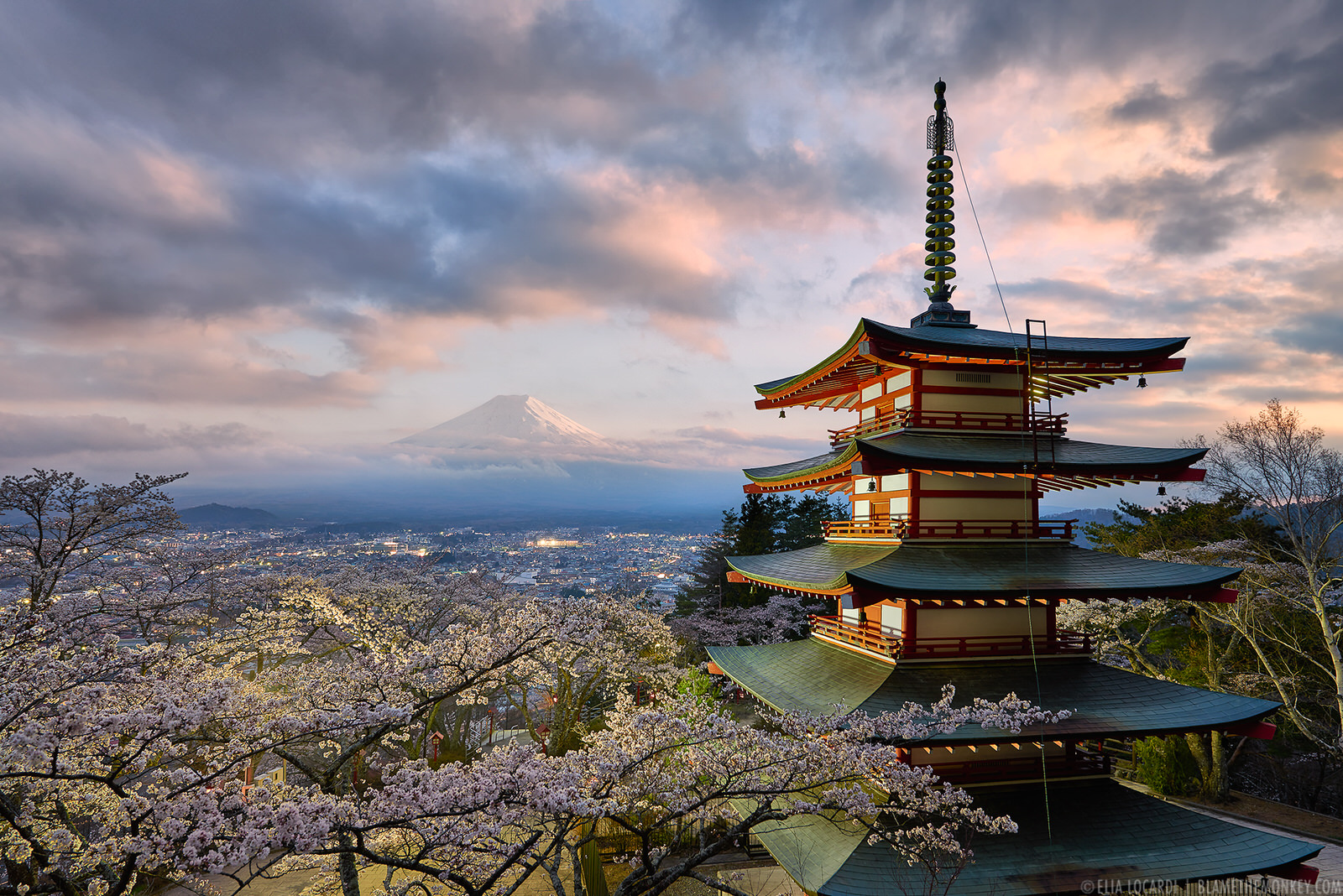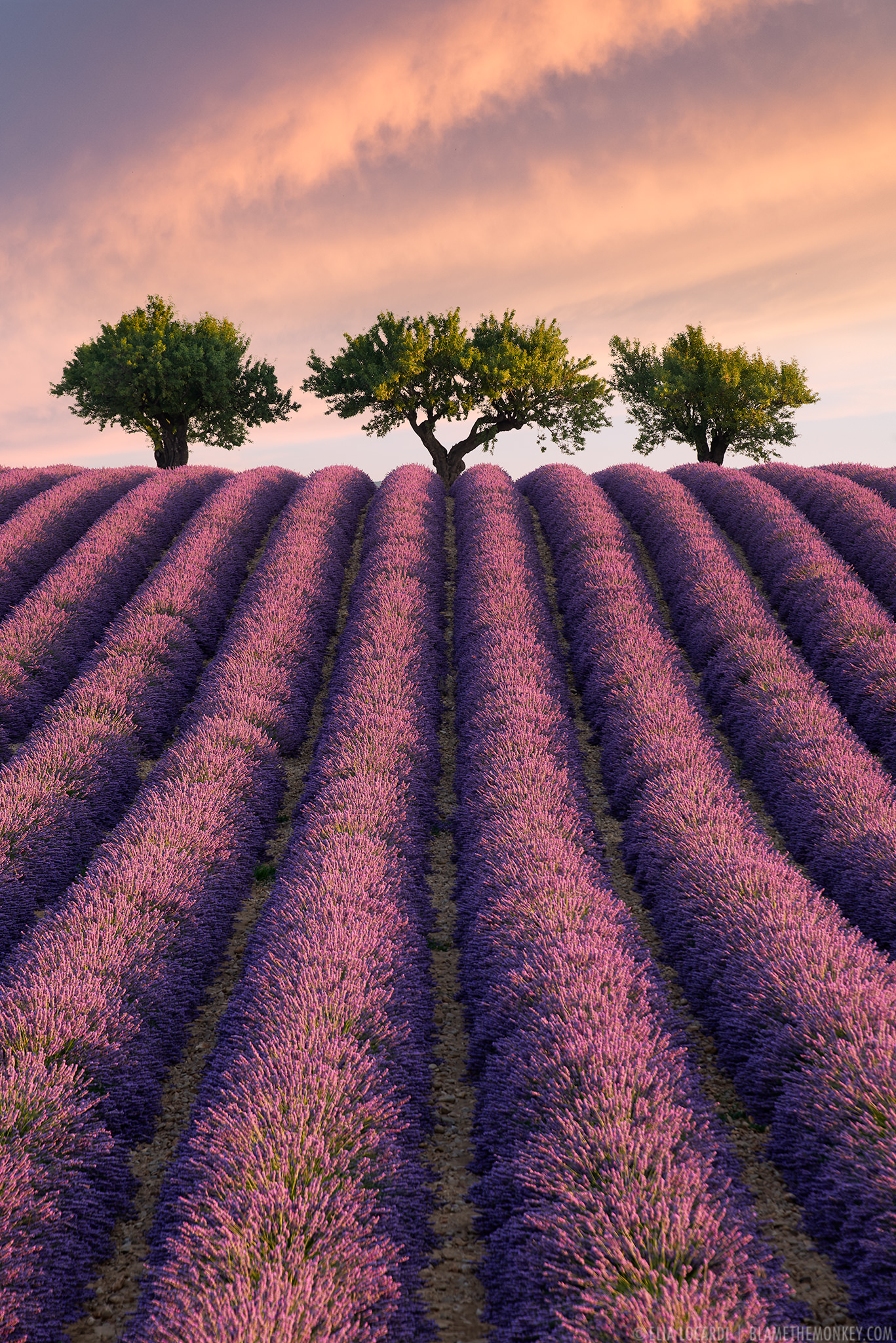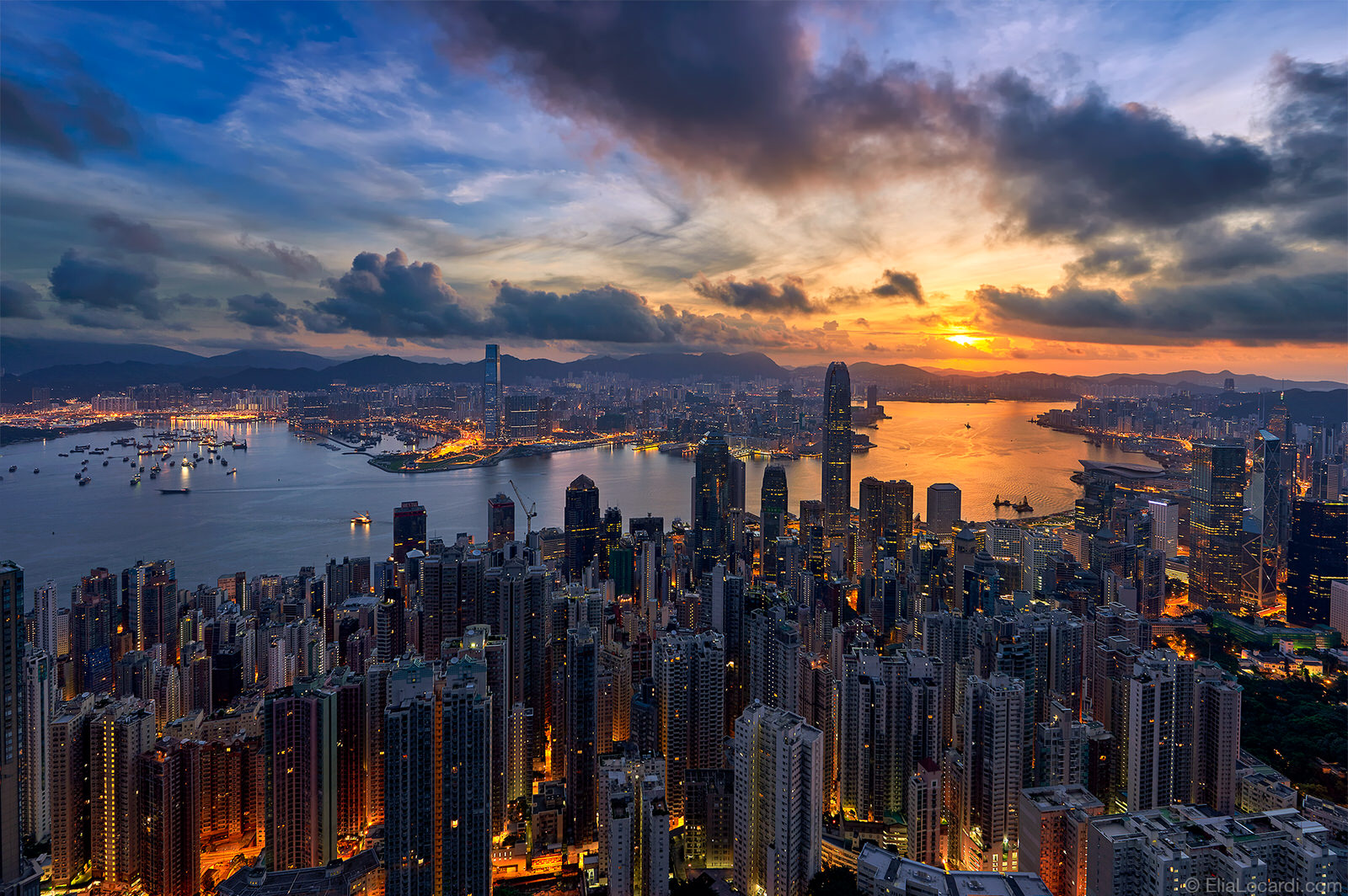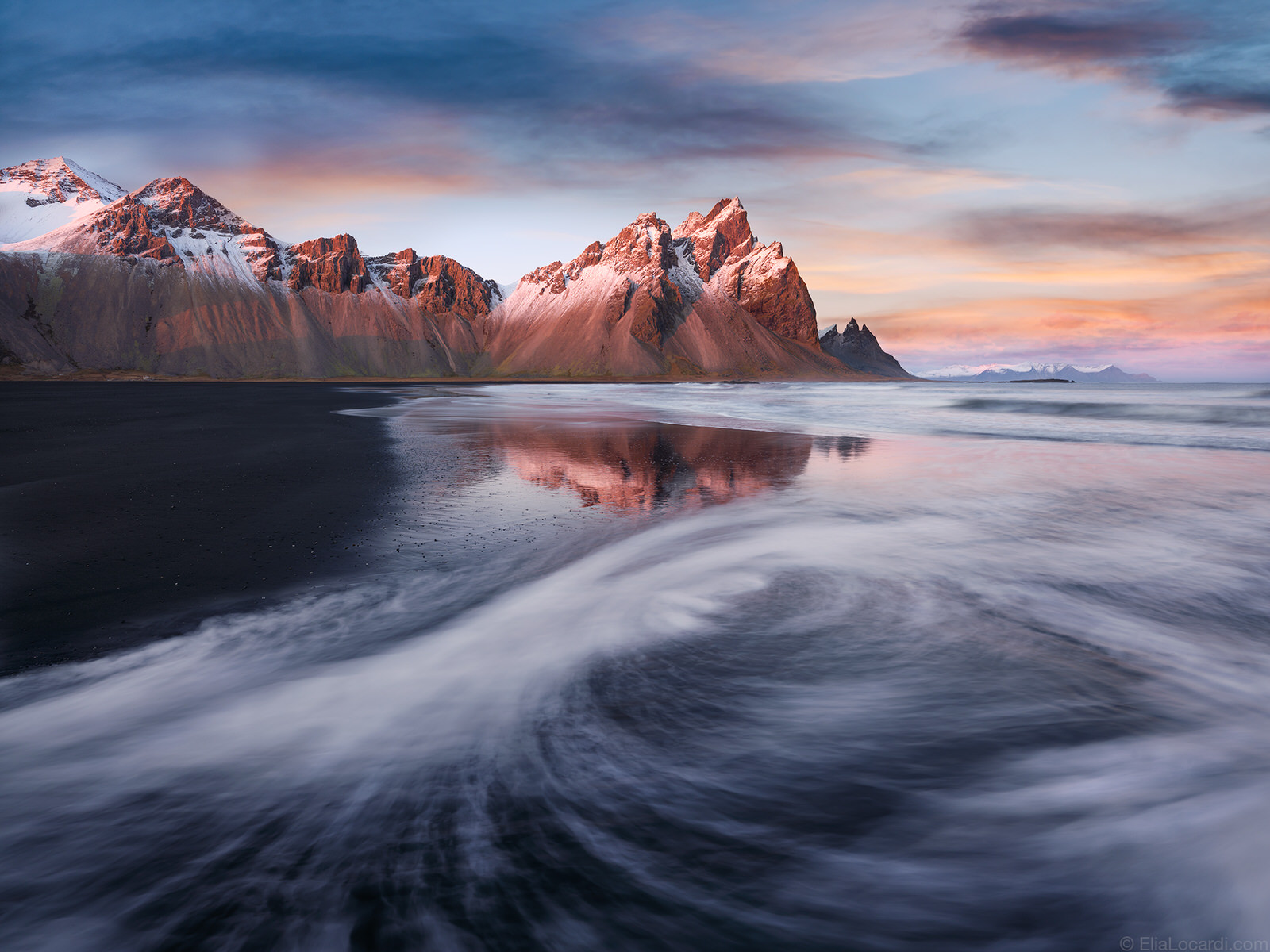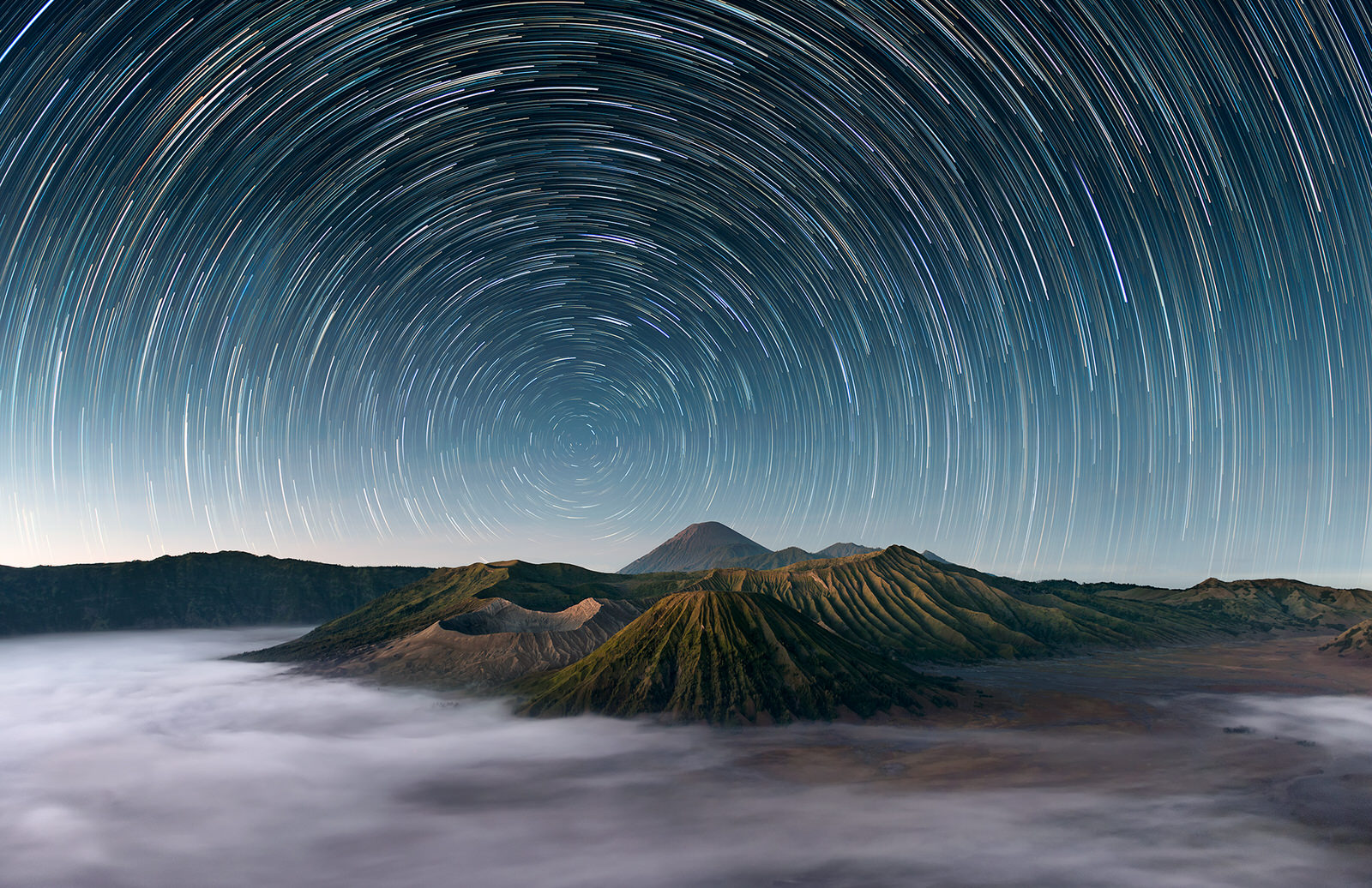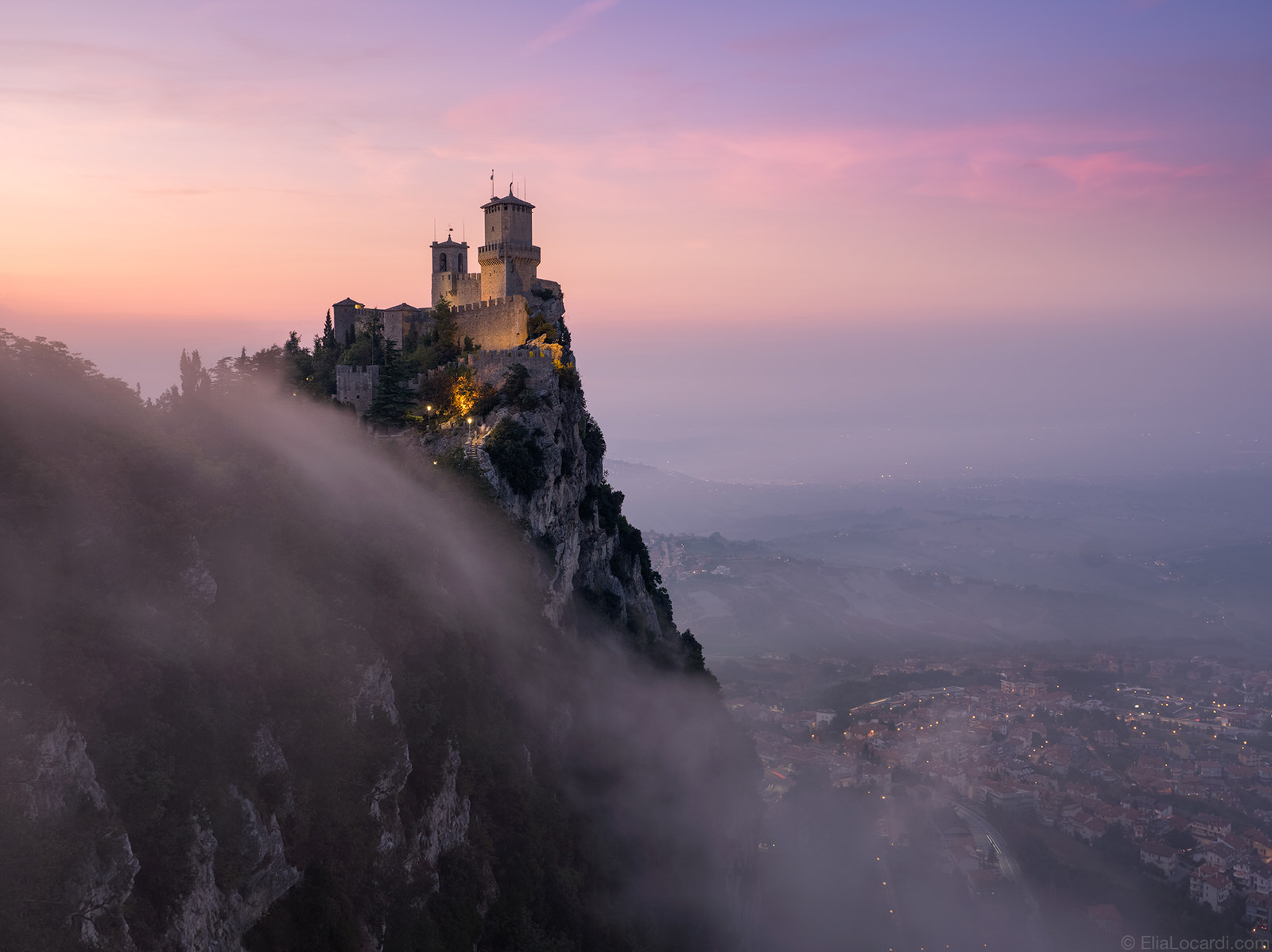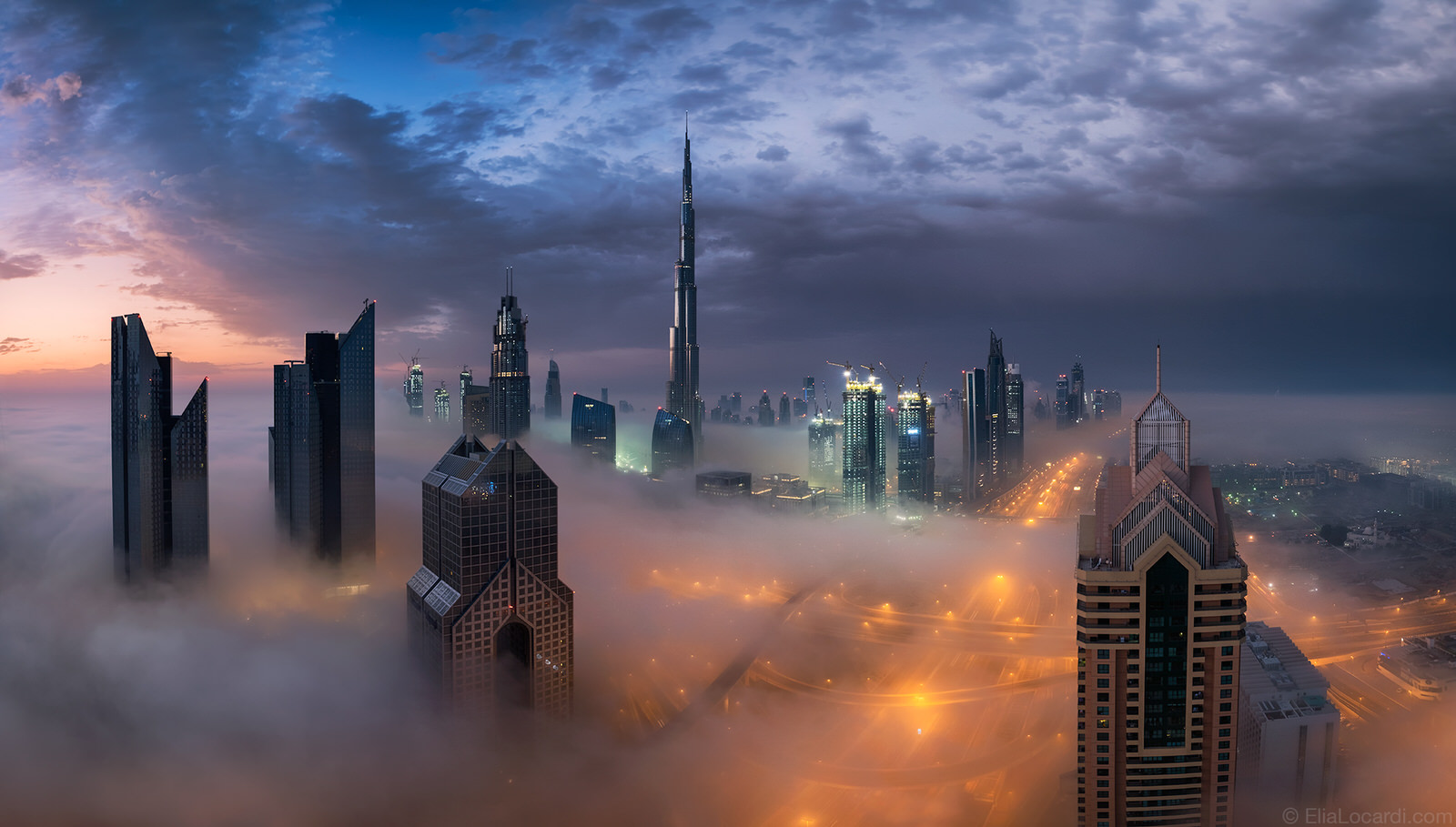
Are Selfies Destroying the Planet? Travel Photographer Elia Locardi on Preventing Destructive Tourism
A typical day in the life of internationally acclaimed professional travel photographer Elia Locardi could see him shooting in some of the world’s most remote, beautiful locations. Since Elia made the decision in 2009 to pursue his passion for photography full-time, he’s visited more than 65 countries, flown almost two million miles and worked with brands, countries and tourism agencies on nearly every continent.
With a strategic – and patient – approach to getting the best possible photo by waiting for the best possible conditions, Elia combines his technical skill with Photoshop mastery to create stunning images that blend together various moments in time. As a result, his images capture the color, texture, depth, and atmosphere of some of the planet’s most spectacular landscapes.
In 2012, Elia and his wife, Naomi, sold almost everything they owned in an effort to become digital nomads. The couple was location independent from 2012 to 2017, and lived a completely mobile lifestyle as they travelled around the globe, photographing and educating along the way.
Now, they’ve established a home base along Florida’s space coast, which also functions as a landing point and a storage site. We had the chance to catch up with Elia and find out how he built a business travelling the world with his camera in hand.
How did you get your start in photography? When did you first begin to consider yourself an artist?
I actually went to school for media arts and animation, which is basically just computer animation. I learned Photoshop my first year in 1999, and then graduated in about 2002, 2003, and spent about 10 years as a motion designer.
Right around the time of the housing crisis, in 2008, we actually decided to make a change. I was really tired of 80-hour work weeks and burnt out from doing visual effects and motion design. So, I decided to leave the creative industry – after 10 years of working as an artist, I didn’t feel like an artist anymore. I took some time off and basically picked up a camera in order to feel creative again.
At the same time, I decided to start prioritizing life decisions around experience instead of career, and we decided to travel a little bit. We started to take our first real trips in different parts of the world in 2008. And in 2009 and 2010, I really started to like the idea of traveling and taking photos, and my style started to develop into what it’s become today.
Photography, for me, in the beginning, was the idea of being just a pure artist again, and not compounding all of these things like career or genre on it. And slowly, throughout that process of becoming creative again, I was able to build sustainable business around it that didn’t pull from the feeling of being creative. The business side of photography for me wasn’t on purpose; it just sort of naturally progressed.
What artists or photographers do you most admire? And how has their work influenced your own?
There was nobody that I found inspiring in the beginning and, just like when I’d start big projects for different companies and networks when I was in visual effects, I purposefully didn’t look at anybody else’s work because I didn’t want to be influenced by anyone – I wanted to only be influenced by myself.
There are definitely some really talented artists and, especially today, the amount of landscape and travel photographers has gone through the roof. I mean, it was a handful 10 years ago. Now, thanks to Instagram and social media, we have access to so many amazing artists and designers. And, while I find influence from those people as far as an influence on my creativity, I never let the current trends or style influence my work. I always make sure that comes from a place within myself. Sometimes, the only way you can do that is to turn off social media – you have to stop looking at it, and you have to look at other things, too.
If I’m working on photography, I’ll usually study a genre that’s completely opposite of what I’m trying to create. If I’m working on something for YouTube, I actually watch old cinema – something that’s different, so I can pull little bits of information to help me sort of craft something unique rather than being influenced by what’s already out there.
How do you keep a fresh perspective when you’re travelling the world and shooting at locations that have been photographed so many times?
This is a topic I’ve actually been discussing with a lot of people around the world this year. When I was getting started in 2008 and 2009, I had a colleague tell me it was impossible to make a career as a travel photographer because everything has been done before, everything has been photographed before, and there’s no reason to ever photograph these places again. What they didn’t understand was that social media was going to happen. Maybe I wasn’t the first person to ever photograph this place, but I was the first person to share it on Google Plus, when it first came out. At that point, people had seen it in books, people had found it on Flickr, on Google, on Twitter, but not on mainstream social media that was just shared and multiplied.
Now, though, we have an issue – we all have cameras. I think this is a really good thing that we can all just take out our smartphones and get beautiful photos. But now, not only have these places been visited and photographed, but we’re being inundated on every single media platform that we have.
It’s also caused an issue where 10 years ago or even six years ago, when you’d go to some of these locations – Iceland is a perfect example – there’d be one or two people there. Now, there’s 300. Or, when you’d go to Venice, there might be two people with a tripod, some point and shoot cameras, and people walking by. Now, it’s 30 people with tripods and everybody doing selfies. So, it’s not that it’s changed in the way that it’s been done before – it’s changed as far as the density of the people there at the same time taking photos.
What I thought would happen is, when you have more people doing something, you’re going to have more variations, more versions, more uniqueness. But what’s happened now, because it’s so easy to access things like Instagram and we see, you know, the red jacket in front of the waterfall – we’re not seeing anything new, anymore. We’re actually starting to see more of the same. This opens up more opportunity for somebody to come in and do something different.
What does it mean to be ‘location independent?’ What kind of challenges did that lifestyle present for you as a photographer?
We spent five years location independent: five years of homelessness. The first year is exciting. The second year is a little bit more challenging. The third year, you realize you can either keep doing it, or not do it.
We actually decided around the third year that we wanted to start winding down and maybe have a home base. The reason was not because we were tired, or it was becoming too difficult to be on the road – the reason was we were getting busier. So, it would be, how do I transport six drones from here to here without renting a storage unit in Bangkok or without shipping it all? Logistically, for the scope of work with the projects we were taking on, being location independent didn’t work because we couldn’t take everything with us all the time.
It ended up being more viable to just have an apartment again somewhere affordable in the United States, so we could plan a certain number of visits back per year just to swap gear. I think the gear aspect was something that I didn’t expect. It would be nice if you could just go around with one camera, one lens and a laptop, and be good. But it doesn’t work that way.
The biggest challenge with location independence is really accepting the fact that everything you have is everything that you have to take. The biggest challenge is taking all of that everywhere because you have to be able to travel lightly in certain situations, but still get the job done. If you’re going from city to city in Europe, that’s pretty easy, but if you want to spend two weeks trekking in the Himalayas, what are you going to do with all your stuff?
The number two most difficult thing is finding Internet connections for running a business. If you’re just going to travel the world and take photos and have fun, that’s great – that’s my dream, too. But if you’re going to do that and run your photography business, then you’re going to have to be logged in sometimes. And that is not something that’s universally good all over the world. That’s difficult.
And three is probably the disconnection from your friends and family. And something that happened with me, from traveling for the past 10 years, is that I feel more at home in 30 or 40 different countries than I do in my own, because I’ve been there more. It’s taken me a while to make our small town in Florida feel like home again, because I’ve had to rebuild all those connections. If you spend five years being away, you’ll realize how important friends and family actually are.
What’s the connection between your photography and your passion for the environment?
I try to leave each place a little bit better than when I arrived. A few years ago, I was pretty heavily into environmental and animal welfare issues, working with some people in the industry on projects saving different species. I was doing that for a couple of years, but it’s tough. Anybody who wants to get into that needs to understand that it’s extremely depressing – no matter what you do, it’s never enough. And it’s heartbreaking, because every one thing you’re working on, you see 10 other things where animals are being wiped out, or decimated, or destroyed. I just felt that, with the level of what I’m doing as a photographer, there’s only so much influence I have over it. I can work with the right people and lend a hand, and we can get some things done. But it didn’t feel like it was enough.
In the last two years, I’ve been kind of flipping the dialogue into how to prevent destructive tourism. I’ve been talking to a lot of people, working with a lot of people and starting to craft a narrative where we can all be on the same page about how humans are destroying some of the most beautiful places on the planet with something as simple as a selfie.
It’s tough to say, “You know what? Nobody should be visiting Venice anymore.” I don’t think that’s realistic. On the Venetian side, the politics is like, “Okay. Well, let’s impose a tariff. Let’s only allow a certain amount of people in there a day.” That sounds like a great idea, but the people who live there are saying, “You basically just made Venice Disneyland, because now, we’re Veniceland.”
And that’s what they’ve been calling it for a few years. Some of the projects I’m getting ready to release this year are going to start lightly bridging the topic of how we can all be more aware of what we’re doing, and how we can maybe start to curb these things both as a traveler or as a photographer, but also as a policy maker. How can we all work together to share the world and not wreck it – the last thing we want is to be in that beautiful location with a sea of 3,000 people all trying to take that selfie.
A lot of it is actually getting into the cores of these things and how to communicate them. It takes an effort both on the consumer side and on the side of the legislation of, even, the countries of those locations. That’s what I’ve been most passionate about lately.
How have you developed relationships with brands and established partnerships? What’s the benefit of this for a photographer?
Working with brands is a double-edged sword. The number one thing for photography – especially landscape, travel – is that if you go into it with the mindset that you’re going to make money, you might as well not do it. Don’t do it. If you want to make money, be a dentist, doctor, lawyer – there are a lot of things you can do and the money will come. Really, most people who get into photography want to be passionate about it, because it’s an art form. These days, it’s a little bit difficult because there is Instagram.
What we’re seeing now is this distinction between photographer and influencer. Some people do it really well and sort of keep it in that middle line. But now, we’re seeing people either want to be a photographer, or they’re actually just using it as a label and a name – they want to be an Instagrammer or a YouTuber.
Right now, in a world full of influencers and iPhones and social media, working with brands comes down to what you can offer each other that somebody else can’t. That’s been the classic reason to work with somebody or how to build a relationship, but now it’s even more important. Working with brands is something I do a little bit differently than just saying, “I’m on this team,” or, “I’m this ambassador.”
What I usually do is try to get people involved that I think best fit the parameters of the project. Usually, I’ll have an idea of what I’m doing or I’d already be working on going to a location or shooting for a certain cause or a certain idea. And, based on that idea, I’ll pitch to the brands that I think are best suited for it and try to get them on the same page.
You have to be really careful. I said it’s a double-edged sword in the beginning, because some sponsorship can be really helpful – the camera companies can send you the gear that maybe funds some of the work that you’re doing. But it also can become disingenuous to your audience, and you could lose some respect from your fans if you start pointing to affiliate pages, marketing for the brand or doing advertising. You really have to make sure the brands you work with perfectly align to the message you’re trying to send out and support what you’re trying to do.
If done right, it could be something extremely beneficial to both parties. And the way you get in the door is to start interacting with them and start connecting in the communities. It’s much easier now. All the camera companies – Sony, Nikon, Fujifilm – they all have communities on social media, and they usually have email addresses where you can actually submit your work, almost like when we were trying to submit resumes for jobs. You’re basically answering a few questions, telling them why you want to work together and sending examples of your work. That’s really where you have the opportunity to talk about yourself. But if you can build that foundation of communication first, by getting to know the people in the community, then when you do reach out, chances are they’ll remember you and, kind of, know who you are.
Do you have any particular habits that are a part of how you begin your creative process?
I’m a little atypical when it comes to that. For things to work for me, they have to come from a place of motivation.
Usually, I do what I call the process of putting things on the back burner. I’ll have an idea and think, “You know what? This could work in this part of the world and it could really benefit this, this and this. And it would probably work this time of year.” So, I’ll put it on my calendar, along with trade shows and talks and workshops. I have those sort of hard dates, and dates for ideas, and I’ll think about it. And, like most ideas, sometimes they don’t stick. A lot of those things don’t happen. But I’ll put some of the better ideas on the back burner and wait. Maybe I’ll talk to somebody else in the industry and they’ll be like, “Hey, you know, I have this idea…” and I’m like, “You know what? I did, too. Let’s connect that together.” I’ll look for opportunities to find connection. Once things start connecting around a project, I’ll start pushing it forward as an idea.
It’s the process of looking for connections, whether that’s people, places, companies, experiences or just collective ideas. The more things start to come together around the project, I’ll start to notice when it’s something that seems a bit more realistic. Then, I can start formalizing it from idea to actual concept, and many times into a pitch or a proposal, depending on who I’m going to send it to.
What do you do when you hit a wall during your creative process?
That happens almost every day in some form or fashion, whether it’s schedule, the weather or something else. We all have doubts about what we’re doing, no matter what it is, and pushing past it is just something you have to do. Like, I fly 200,000 miles a year and people ask me, “What do you do about the jet lag?” My answer is, “We don’t have time for jet lag.” You can’t do anything about it – you just deal with it, because you have to work on other things.
The best thing you can do when you feel you’ve hit a wall, a creative roadblock, is to give yourself time and space. All of those emails, all the other things that you have to do, that’s all going to be there tomorrow. But the only way you’re going to be able to clear the way, mentally, for yourself is to seriously just take a step back – sit, relax, breathe, meditate, go for a walk. I’ll try to find any body of water, sit in front of it, take some deep breaths and just slowly start to work on whatever you can work on that’s right in front of you, and it will sort of clear up.
This world is really tough, because it can be a lot of creativity on demand. Conceptually, it can be really fun on the surface, but when you actually have to do things under contract, the pressure goes up. Any time the pressure goes up, you have to make sure you allow yourself the time to get back to that pure form of creativity you started with. That’s the most important thing.
Your post-processing workflow has attracted a lot of attention. What are some of your trademark techniques?
For 20 years now, I’ve been using Photoshop, and I’m 100 percent self-taught. My friend called me on a payphone, out of school, and he’s like, “This place is hiring for a Photoshop artist. Do you know how to use Photoshop? Can you come in for an interview on Monday?” And I’m like, “Absolutely. I know how to use Photoshop.” I had never used Photoshop a day in my life. So I decided to spend that weekend trying to figure out how to do it, and I made it through the interview process and learned on the job for years.
That really taught me a lot. Getting into photography, I already knew that side of it. Learning the technical side of the camera gave me the ability to kind of introduce the tools that I needed as I needed them. And when I started teaching it, I was shocked – I’d never looked at a tutorial on YouTube before. But if you YouTube, “How do I post process photos?”, it’s amazing. A million things come up and most of them are really bad, and they’re really confusing.
What I’m known for is being able to explain even complex things in a simple way, because they are not actually complex. That is the big misconception of post-processing – it is not complex whatsoever. People make it seem more complex than it needs to be.
What I’ve been doing over the last eight years is a process blending moments in time together. Sort of like, time bracketing, where you leave the camera set up in one location and you shoot through a sequence of light. That could be a sunset through a twilight. Then, in Photoshop, you actually blend those points in time together, so you can encapsulate an entire range of light in a scene.
And that’s something that, again, sounds really complicated, but it’s actually not. I’ve become very well-known for teaching and shooting in that style.
What makes a truly spectacular landscape photo?
Number one, the location. What makes the most spectacular landscape photo is that landscape. It has to have that wow factor, to begin with, and then it really comes down to the weather and what you’re trying to communicate. That’s really where we can all create a different interpretation of the same scene, because even if we all set up in the same position with the same camera, if we all shot a different day of the week, every single one of those shots would look different.
That’s what makes a landscape truly spectacular – after the location, after the weather, it’s just understanding how it can be visually shown at its best. Is it in the springtime when there’s wild flowers everywhere, or is it in the fall when all the colors change, or is it in the winter when there’s ice pack in the foreground and a low sun in the sky, or is it when there’s a lightning storm? These are the tools we have as landscape photographers to really figure out how we’re going to show the world in a unique way.
What advice would you give to photographers who are just starting out in this genre?
You have to leave your house. Stop looking at social media, stop preparing for it and just get out there. That’s the biggest thing. Spend as much time in the environment as you can, and don’t think that one or two days per location is going to be enough. The more time you can budget to a single location, the better it’s going to come out, because you’ve accounted for variability in the weather and you’ve also accounted for the fact that over time, you become more familiar with a location.
The more familiar you become with the location, the more you start to notice not only what makes it unique, but those vantage points that are often overlooked. And it can be very difficult these days, because we’re going to see the same photos on Instagram – we’re going to see that same position, that same location. The initial instinct is to go get that hero shot that’s already been captured, but what you need to do is actually find a way to make it a little more unique.
And the second most important thing also goes back to what I said earlier – it’s about the motivation of why you get into this. The most important thing as a landscape photographer is that you’re doing it because you want to and you’re enjoying it. So, number two, after getting out there and trying it, is making sure that you’re having as much fun doing it as possible.
What are you focusing on right now, in your work and photography?
Right now, I’m getting ready to release a multi-part video series on YouTube in the middle of June. I’m creating a show about travel photography and the extraordinary people all over the world that are doing it.
It’s a show that celebrates not only the most beautiful locations, but it gets into the core of what makes them special and what makes them unique. I interview people all over the world – different artists, photographers, experts about different parts of the world – and incorporate them into the show. For the first season, I think we’re going to seven or eight different countries and interviewing probably 20 to 25 different people.
Elia’s work has been featured by Wacom, Adobe, Fujifilm, and Fstoppers, and he’s presented at some of the biggest photography events in the world – Photokina, Inter BEE, Instagram Illuminate, Photo Plus Expo, and National Geographic Aveiro Festival. To see more of his work, check him out on Instagram, YouTube, or visit his website.
